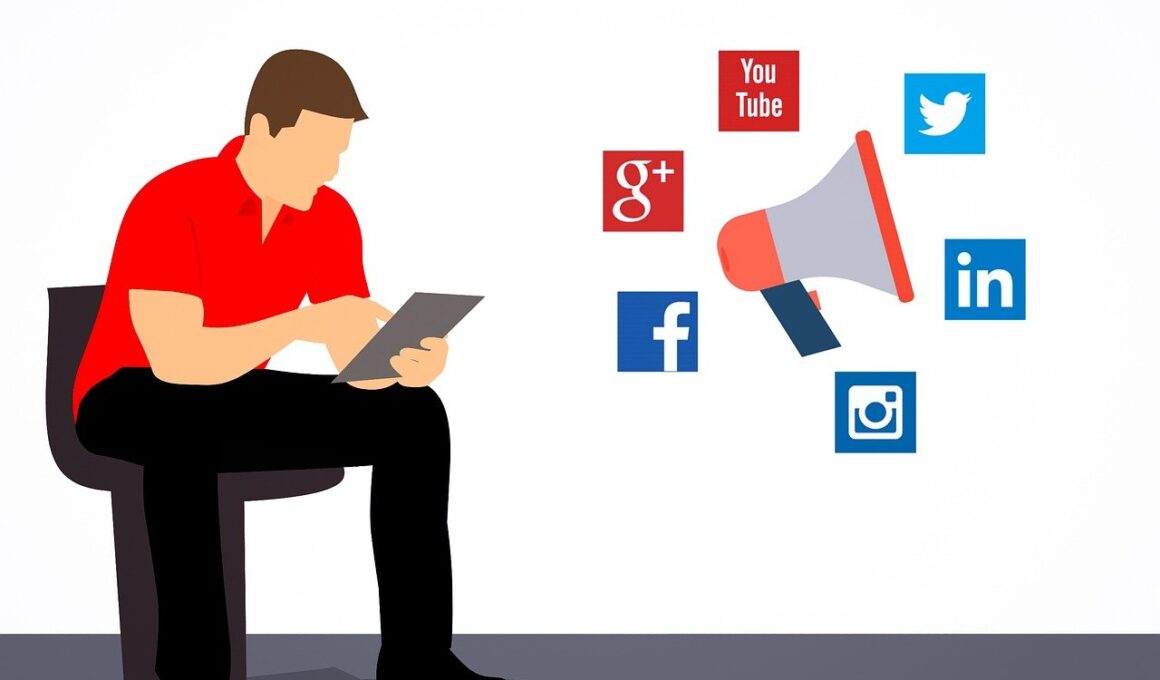Avoiding Common Image Quality Mistakes on Social Media Posts
In today’s digital world, social media platforms play a crucial role in marketing strategies. The images shared across these platforms need optimization to ensure they maintain quality while minimizing file size. A common challenge many face is the balance between image quality and file size, often leading to poor engagement rates. Images that appear pixelated or compressed detrimentally affect user experience. To maintain quality, use high-resolution images and appropriate file formats like JPEG or PNG. Here’s how you can navigate this tradeoff effectively. First, understand the ideal dimensions required by each social media network. Instagram, for example, favors 1080px by 1080px for grid images. Secondly, consider utilizing tools like Adobe Photoshop or online image compressors that optimize without significantly sacrificing quality. Regularly auditing your images for clarity and size is recommended, ensuring that you keep your feeds fresh and visually appealing. By focusing on these aspects, brands can enhance their social media presence and convey messages clearly. As a result, well-optimized images improve visibility and engagement, which can ultimately lead to increased conversions and brand loyalty in a competitive environment.
The Importance of Image Formats
Selecting the right image format plays a significant role in achieving the perfect balance between image quality and file size. Predominantly, JPEG, PNG, and GIF are the most popular file types used on social media. JPEG files are known for their compression capabilities, which make them ideal for photography and images with gradients. However, JPEGs do lose some quality during the compression process. On the other hand, PNG files retain their quality, making them suitable for images with text, logos, or graphics. They support transparency but carry larger file sizes. GIFs are primarily used for short animations, presenting an entirely different approach. Understanding when to use each format can significantly reduce upload times and enhance viewer engagement. Software tools and online resources can aid in choosing the best format for your needs. For instance, online platforms like TinyPNG can convert and compress your images seamlessly while preserving quality. In summary, strategically choosing formats and employing compression tools can optimize your visual content for improved performance in various social media spaces without compromising engagement effectiveness.
When considering image optimization, it’s essential to keep resolution in mind. Higher resolution images generally deliver better quality but can result in file sizes that could slow down loading times on social media posts. Aim for the right resolution to fit platform requirements without inflating file sizes unnecessarily. Standard resolutions for platforms include 72 DPI (dots per inch) for most web images, while 300 DPI is reserved for print quality. Also, keep in mind that each social media platform has its specifications regarding image dimensions and formats, which can affect how your content is displayed. Failing to adhere to these standards might lead to distorted images wherein important content is cut off. Prioritizing proper resolution can enhance visibility and engagement levels. Make use of tools like Canva or Adobe Spark to ensure that you deliver images that are optimally sized for the platform where they will be posted. Proper resolution leads to timely loading, improved aesthetics, and better interactions with your audience, which is vital in today’s fast-paced digital landscape. Following these guidelines will help you craft visually appealing posts that resonate strongly with your followers.
Using Compression Techniques
Image compression is a vital strategy to reduce file sizes while maintaining quality, crucial for successful social media engagement. There are two main types of compression: lossless and lossy. Lossless compression reduces file size without losing any details or quality, making it ideal for images where clarity is paramount. Lossy compression, however, sacrifices some image quality to achieve smaller sizes. While the tradeoff may seem daunting, when used appropriately, it allows for faster uploads and better user experience. Popular tools, like Compressor.io or ImageOptim, provide excellent options for optimizing images. A key tip is to always save a copy of the original image before compressing it. This preserves the source for future, higher-quality needs. To maximize your images, ensure you control the compression settings based on your specific requirements. Regularly auditing and refreshing content is another way to keep your social media feeds engaging and visually consistent. Utilizing an effective compression tool tailored to your specific media needs improves overall performance on social networks while allowing for swift delivery of high-quality images to your audience.
Metadata also influences image optimization significantly. Metadata consists of information embedded within the image file that can include details such as camera settings, location, and keywords related to the image. While this data can be useful, excessive metadata can inflate the file size, which is counterproductive for social media posts. Optimize image file size by stripping unnecessary metadata before uploading your images. Tools like ExifTool or online services allow this process straightforwardly. Moreover, adding relevant keywords through ALT tags and file names helps search engines index images better, improving discoverability and engagement. Well-tagged images enhance SEO efforts, ensuring that they reach a wider audience. Use descriptive file names that correlate with your content instead of generic terms like ‘image1.jpg.’ Furthermore, optimizing the description within the metadata can enhance user engagement as it provides context for your audience. Keeping metadata in check is instrumental in successfully navigating the competitive social media landscape, ultimately improving your visibility and potential conversions through thoughtful image integration.
Understanding Social Media Algorithms
Social media algorithms are constantly evolving and play a critical role in determining how content is displayed to users. Each platform utilizes its metrics to decide which posts are favored or disregarded—this includes factors like engagement rates, post timings, and yes, even image quality. Higher-quality images have the potential to garner more engagement, encouraging algorithms to prioritize your posts. By sharing optimized images that maintain quality but also load quickly, you stand a better chance transforming casual viewers into active participants. For instance, Instagram’s algorithm favors posts that provoke user interaction, such as comments and shares. Posting consistently and at effective times also boosts engagement, enhancing visibility. Monitoring performance analytics to determine the types of images your audience interacts with the most is crucial. Tailor your content based on these insights to increase your organic reach. Conclusively, understanding social media algorithms combined with keen image optimization techniques serves to boost the performance of your visual content while significantly improving the reach and impact of your overall social media efforts.
Finally, the concept of testing different strategies is essential when navigating the terrain of image optimization. Social media platforms are ever-evolving, and therefore, so should your method of optimizing images. Start by experimenting with various image formats, resolutions, and compression settings to see what yields the best engagement rates. Utilizing A/B testing enables you to compare two variations of the same image to determine which performs better. Measure success through engagement metrics such as likes, shares, and comments. This will help you tailor your visual content further to meet your audience’s preferences. Additionally, keeping up with current trends in social media can guide your strategy. Implement feedback from your audience regarding the visual aspects of your branding. Observing competitors can also provide insights into what works well in your specific market. By continually refining your image optimization strategies in light of audience feedback and performance metrics, you are more likely to engage your audience effectively and achieve your desired outcomes. A commitment to testing and adapting will ensure your image content remains relevant and compelling over time.


